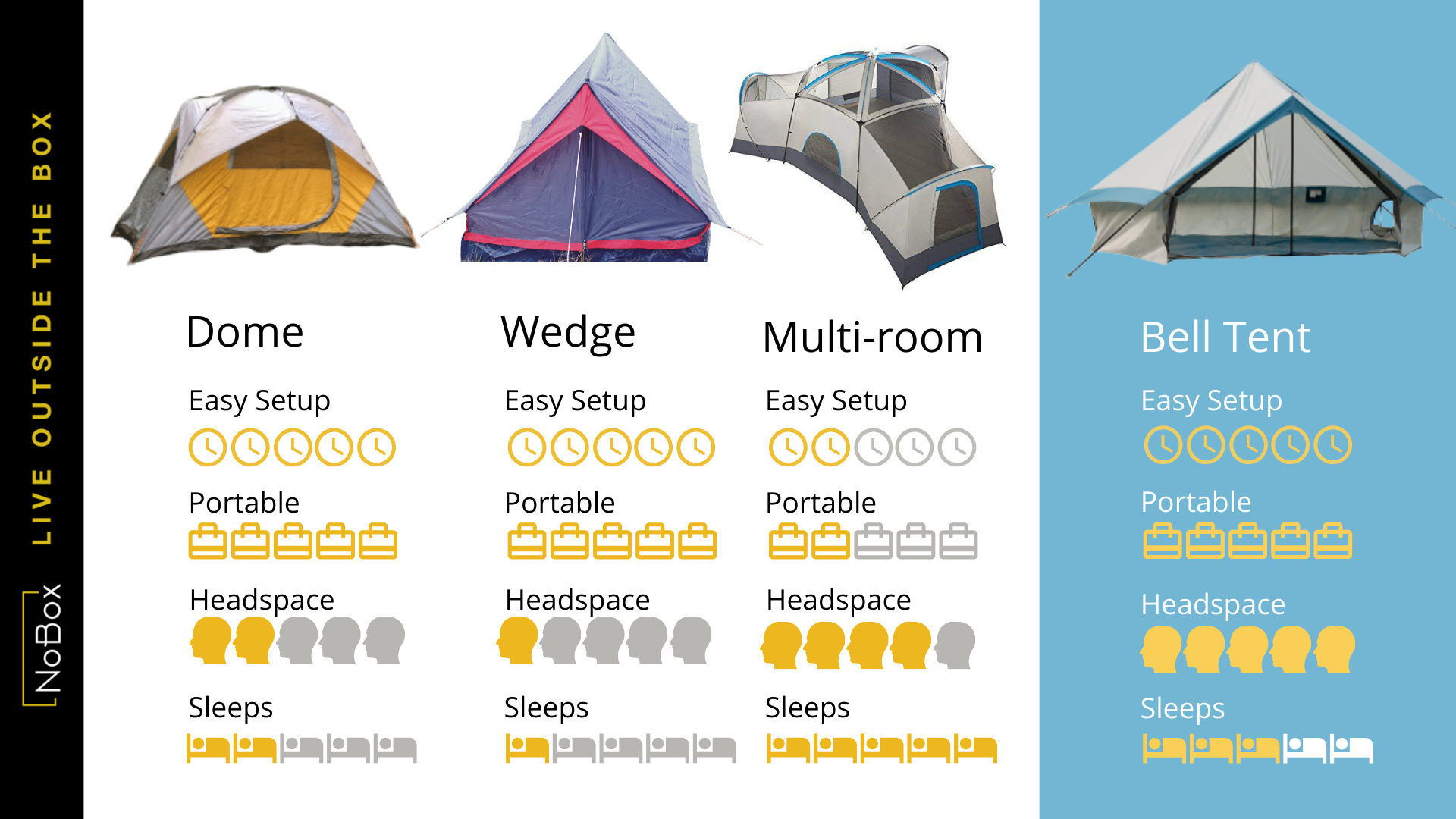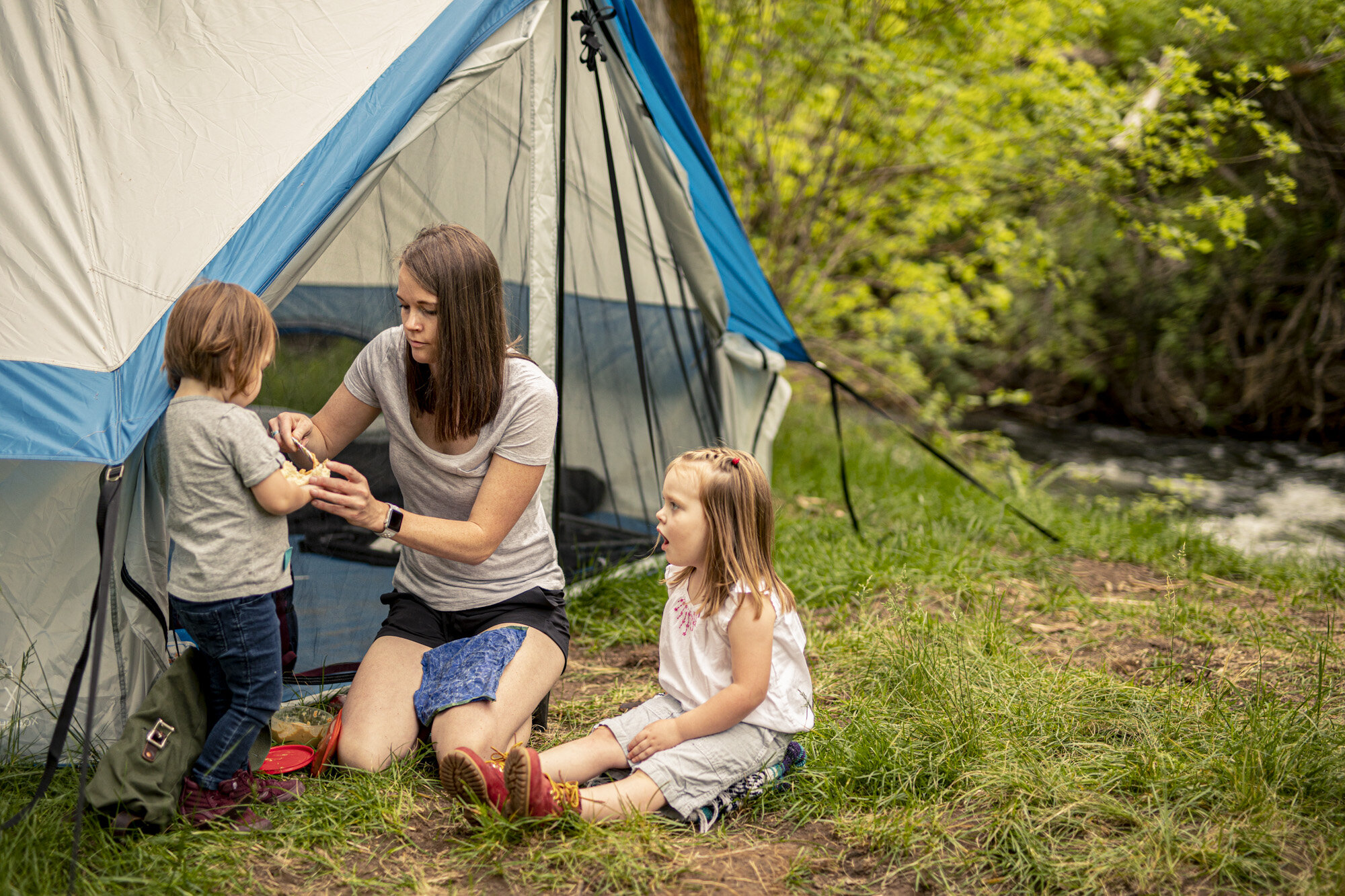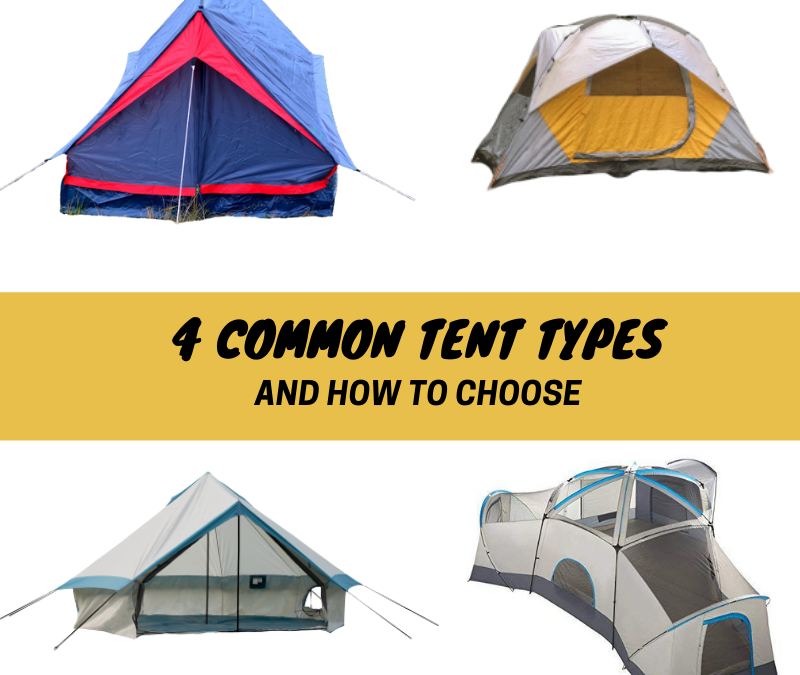If you have ever researched the topic of how to choose a tent, you probably learned about all
the different types and variables that exist, but we are going to focus on 4 common tent types.
We all know how important sleep is, especially when adventuring! Whether in the backcountry
or in the backyard, having enough energy is crucial to experiencing everything to the max.
Outdoor sleeping comes in many different forms, from snoozing under the starry night sky to
cocooning yourself in a toasty hammock. By far the most common method, however, is the
trusty tent. Tents have been around for a long time and have evolved into many different
branches for many different occasions. Whether you’re looking to embark on a solo journey or
bringing your best pals, this guide will hopefully illuminate how to choose the night tent shelter
best suited for you. For this discussion we are going to key into bell tents, dome tents, wedge
tents and multi-room tents, though there are so many more out there.

Bell Tents
An iconic and highly recognizable shape of tent, the bell tent, has a rich history and can be found in different iterations around the globe. Bell tents are ideal for when you want to elevate your camping experience into a luxurious outdoor getaway. One of the more popular shapes of bell tents is the yurt, a tent originally found in the steppes of Central Asia. As with other bell tents, the yurt is both large and portable, making it perfect for a company of adventurers looking to glamp. NoBox’s Portable Bell Tent, inspired by the traditional yurt, offers versatile and adaptable shelter for any situation. It has enough room for up to 8 people, with plenty of both head and foot space so that you can move around without restrictions and maximize your comfort. No need to worry about your company getting too toasty either as the tent easily ventilates through its wall and ceiling ventilation, making for an even fresher space. If time is of the essence, the NoBox Camping Bell Tent won’t keep you occupied for long as its two poles make for a speedy set-up, giving you more time for other priorities. Although a hardy alternative, as with most tents, bell tents are best set up on a flat surface that isn’t too rocky, muddy, and exposed to the weather.
Dome Tents
By far the most common and popular tent shape is the trusty dome tent. You see it at festivals, you see it in the backyard, and you see it in the deep wilderness. Its simplicity and portability makes it ideal for most situations including one or two people. Most dome tents usually come with either two or three poles for the main tent and at times one or two for the rain fly. When setting it up, just as with the bell tent, make sure you find a spot that’s both tent and back friendly, that is flat, dry and without twigs and rocks. Best practice camping also means you should set up your dome tent, and most tents, on a tarp to protect both yourself and the tent from the forces of the earth below you. Once you’ve got that figured out, it’s as simple as assembling your poles, attach them to the tent and pop it up.
Wedge Tents
Wedge tents, sometimes referred to as an A-frame tent, are an older type of tent peaked in the 1800s and have made their fair share of cameos in horror movies and scout scenes. While not the most stable and spacious, wedge tents are both highly portable and easy to set up with only two upright poles and a ridge pole. What they lack in stability and use they make up for in sheer ambiance. If your goal is to camp for one night in a calm, quiet, and scenic forest in decent temperatures with the intent of telling ghost stories, then wedge tents are for you.
Multi-Room Tents
Want to maximize your glamping? Then multi room tents are definitely for you. With a lot of rooms it’s the perfect luxurious choice for families that are looking to make visits to the backdoors easier for both parents and kids. While they’re heavier to carry around and can be quite an investment, multi room tents really make up for it with the space and privacy. If you’re not an entire family then the spare sleeping spots can easily be turned into storage units, keeping gear and food away from harsh weather.

No matter what you might be using it for, it can be hard to figure out how to choose a tent with all of the options available. Hopefully you have learned a little more about the 4 most common tent types. Remember though, what matters the most is that you leave the nature you traverse as you found it, both as an act of respect for the earth we live on and for future adventurers’ sake. If you’re looking to further improve your adventuring inventory, feel free to look at NoBox’s other products and hopefully we can help you take your backdoor adventures to the next level.


Recent Comments